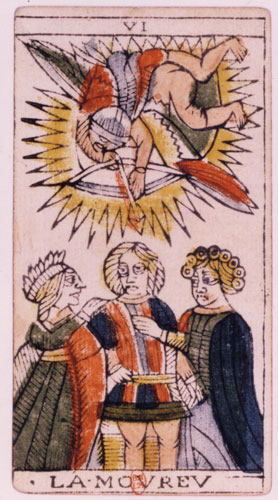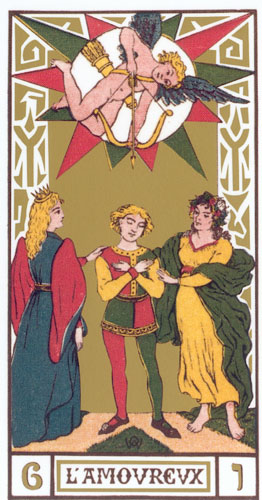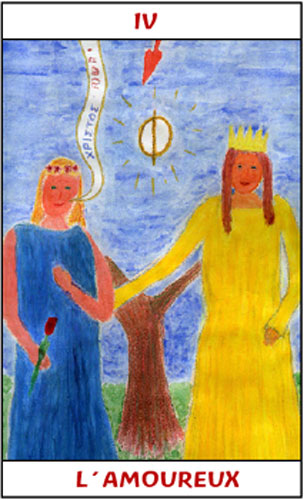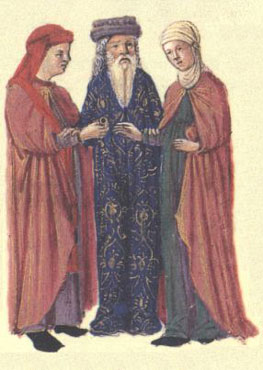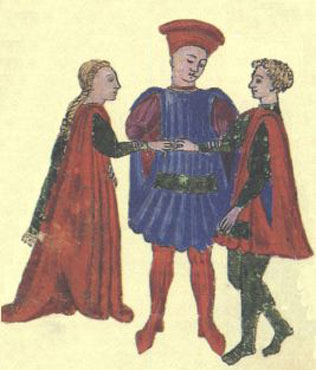Tarot and Cathedral Carvings |
VI - L'Amoureux |
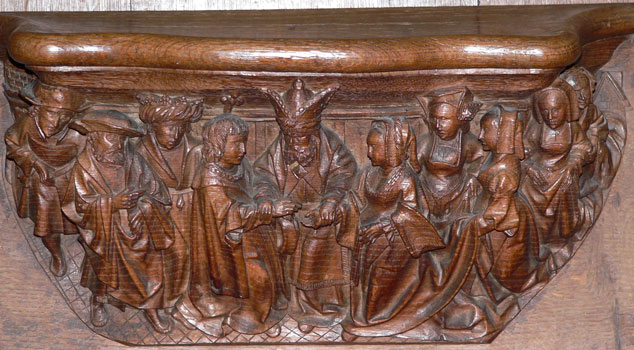
For myself at any rate, there is clarity in that the image represents no so much what the later appelation terms L'Amoureux (the Lover), but rather a wedding scene. Of course, it could be argued that a wedding occurs in the first place as a consequence of being a lover (or being pierced by the arrow of Love), or, conversely, that marriage makes of the couple lovers.
It is a fascinating question as to why the title in the Marseille-type decks (and others) chose 'lover' rather than 'marriage' as title. Perhaps, in this case, the similarity between 'couple', 'love', and 'marriage' in mediaeval Hebrew may point to an alphabetic influence. As Mark Filipas also points out in his Alphabetic Masquerade, the sixth Phoenician letter (equivalent to Vav, the sixth Hebrew letter) is similar in form to the Greek Digamma ('Y'), used by the Pythagoreans and their later followers to indicate a path in the road, and hence, likely, the similar understanding of this card as a choice between vice and virtue. I also played with this a little in my description on the card I created for the third Aeclectic Community Tarot Project (the card image follows as well, my artistic 'merit' hopefully balanced by other aspects!).
Dodal |
Wirth |
jmd's |
Despite my own take on the card for the purposes of the project, I still see this image as a standard and classic representation of marriage. A question that could perhaps prove useful is who's wedding is perhaps being represented? In other words, as viewers who saw perhaps encapsulated snapshots of allegories and, I would suggest, specifically Christian depictions, what story may have come to the fore? Below is Raphael's painting of the holy marriage, obviously anachronistic in depiction, but absolutely clear in terms of the central imagery.
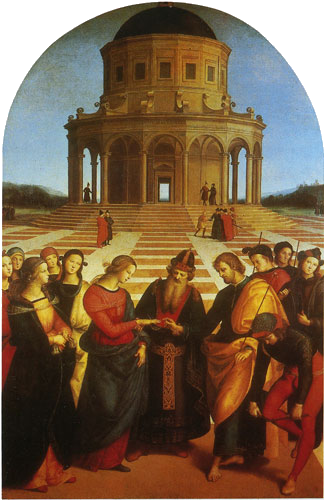
Raphael
Many similar images of marriage occurs from the period. Two of my personal favourates, that I have also included in discussions on the card in the Marseille section on Aeclectic, are the following, from manuscripts:
|
|
One of the interesting aspect of the above two images is that the newly weds both look feminine in relation to the officiating masculine figure. Of course, youth is often depicted as more feminine than aged people (of either gender). In this case, however, I also am lead to wonder if part of the overall transition in the Marseille depiction to clearly a young man between two women is a 'misreading' of imagery such as the above.
Anyhow, to leave it for now, and encourage participation in the discussion on the contrasting of the Dodal to the Conver version of these cards, I suggest having a look at Robert Mealing Compare pages on his TarotHistory site, and then heading over to Aeclectic's TarotForum Marseille section.

Lovers? |

Woodcarved wedding |

again... |
